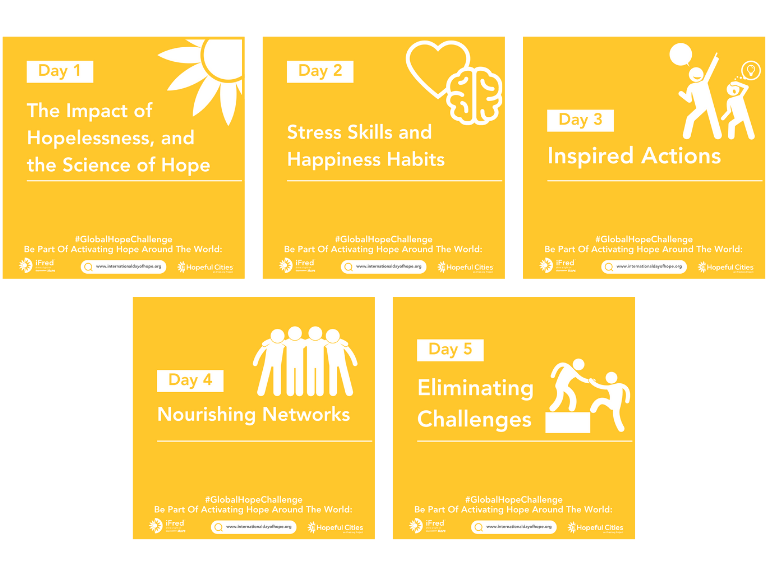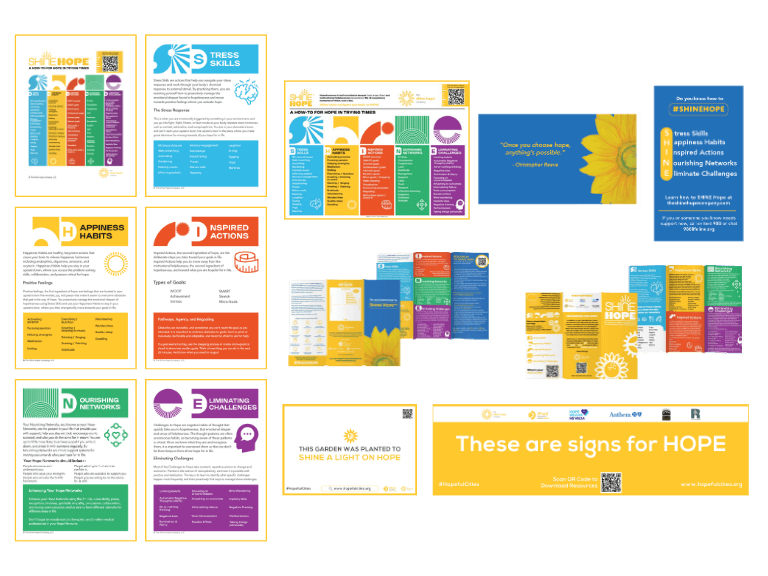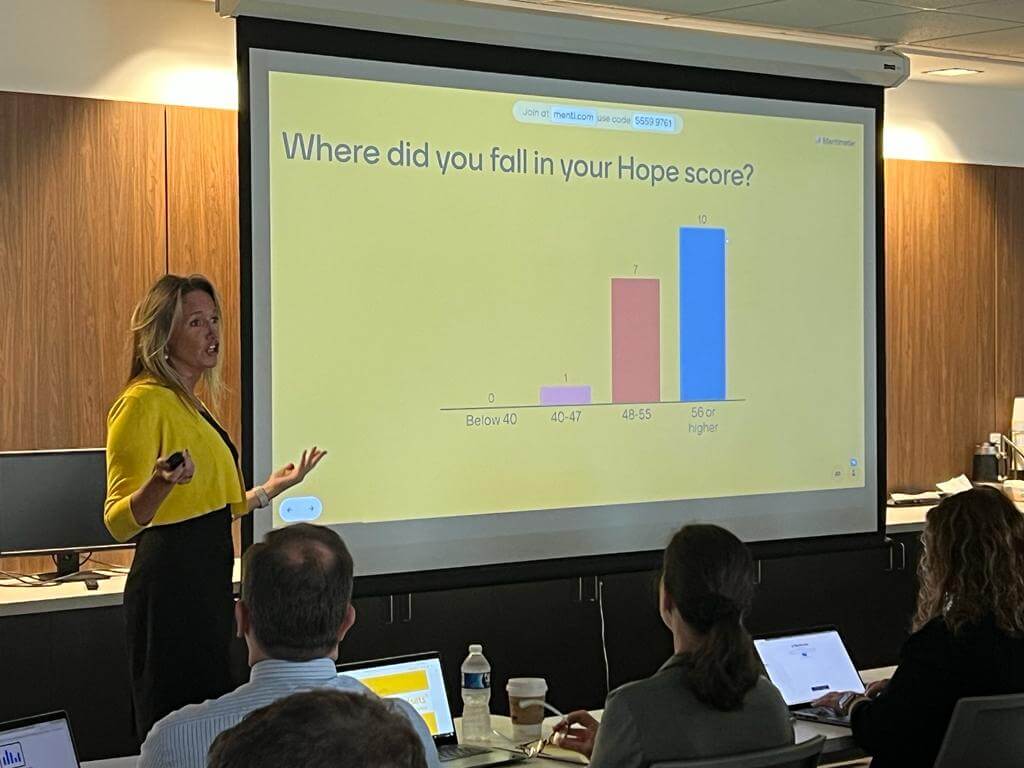Government
Incorporating government officials into Hope activation initiatives is pivotal for fostering widespread change and resilience within communities. Their involvement sets powerful examples by normalizing discussions on Hope and mental health, influencing policy decisions that allocate resources toward Hope-building programs, and amplifying awareness through public campaigns. Government leadership fosters collaboration among diverse community groups and ensures the integration of Hope-focused strategies into long-term policies, guaranteeing sustained efforts toward empowering individuals, families, and entire communities to navigate challenges with optimism and resilience.
Government officials must recognize Hope as a strategic imperative due to its profound impact on society’s well-being. Embracing Hope as a central strategy can lead to reduced mental health issues, fostering a more resilient and cohesive community fabric. By investing in Hope-building initiatives, officials can enhance workforce productivity, reduce societal challenges (i.e., violence and crime), and potentially decrease long-term costs associated with mental health care. Moreover, integrating Hope into policies ensures more effective, sustainable solutions to societal issues, creating a pathway toward a brighter future for generations to come.
Prioritizing Hope sends a powerful message of commitment to citizen well-being, fostering trust and active engagement within communities. It’s not just about addressing immediate concerns but about shaping a more Hopeful and resilient society for the long term.
Take Action with the following interventions:

International Day of Hope
The International Day of Hope, scheduled May 1st, provides an opportunity for global solidarity. On this day, we come together to share the science, stories, and strategies of Hope and actively engage in implementing Hope in our lives and communities worldwide. Our goal is to advocate for the establishment of The International Day of Hope through an official United Nations resolution. This initiative will kick off a five-day campaign featuring the Five Day Global Hope Challenge, yard signs, sunflower gardens, workplace educational posters, sunflower Shine murals, live speaking events, classroom teachings of Hopeful Minds, and more.
We encourage Mayors, Governors, and schools to issue proclamations for their towns and environments, demonstrating solidarity in officially recognizing the day and joining the Hopeful Cities Movement.
Five-Day Hope Challenge & Social Media Campaign
The Five-Day Global Hope Challenge is a five-day e-mail challenge ensuring all know the what, why, and how to Hope. It reviews what Hopelessness is, the Shine Hope framework, and instructs how to measure Hope. It is a simple way to get started learning how to Shine Hope.
Social media is a great way to share the resources available for Hope with your friends, family, and community, so we have created a social media toolkit for Hope as well. All of our images and content are available to download at no cost to share and activate the message for Hope.
Download the Hope Challenge Social Media Kit for daily social media posts:
You can also help your community access the Hopeful Cities resources by tagging us in your posts using @theshineHopecompany @ifredorg #HopefulCities #Hope


My Shine Hope Story™ Template for Mayors
My Shine Hope Story gives community leaders an avenue to normalize Hopelessness and share their unique experiences by using the Shine Hope framework. We all experience moments of Hopelessness (i.e., emotional despair and motivational helplessness). How we manage the moments of Hopelessness matters.
We suggest you share a recent challenge, large or small. We encourage you to spend 20% of the time describing what the Hopelessness was about (sadness, anger, fear, and powerlessness). We then ask you to spend 80% of the story sharing how you overcame it.
What Stress Skills did you use? What Happiness Habits did you practice? What Inspired Actions did you take to make it through? How did your Nourishing Networks support you? And what was one of your biggest challenges (i.e., negative thought pattern), and how did you overcome it?
We created an outline for you to use while creating your Hope Story, and you can use our Shine Hope infographic for some ideas. You can download the Shine Hope Infographic.
We encourage you to share your story with the community while encouraging others to share their stories as well. Discuss what skills work, help all practice, and be sure people know where to go for support if they are having challenges in your city.
If you want to share your Hope story on social media, we encourage you to do so. Please tag us @ifredorg @theshineHopecompany #myHopestory #myHopehero so we can share with others.
Digital Communication Assets: Shine Hope Infographic, Moment of Hope Cards, Teen and Adult Brochures, Posters, Signs, and Billboards
Our digital communications provide an opportunity to educate all on the Shine Hope framework in an easy-to-understand way. We have an infographic and digital downloadable tool for newsletters or social media posts to describe the Shine Hope framework at no cost.
We have two brochures that are great for sharing in newsletters or other city-wide communications. Our Digital Shine Hope Brochure is geared toward adults, while our Teen Shine Hope brochure is similar, yet more teen-friendly. Both brochures include tips on the Shine Hope framework, and have resources to help elevate Hope in your life and with others.
We also have Shine Hope Posters you can use as individual images, or on web portals, that give more details into the Shine Hope Framework. Lastly, we have a Sunflower Fascinating Facts poster for some interesting tidbits on sunflowers, if you have an interest!


City Landing Page Listing Resources
As an official Hopeful City partner, we create a landing webpage with your city’s resources. The landing page will include a list of community resources that you provide to us, or we can hyperlink to a page on your city’s website that already contains resources. The goal of the landing page is to ensure that everyone in the community has one place with a list of resources they can use if they are having challenges with things like housing, mental health, finances, crises, and more.
It is listed as: www.hopefulcities.org/country/state/city
Your city gets added to our website, and as people see the web link to www.Hopefulcities.org they see your webpage. We are also able to add a specific QR code for your webpage if you want, which you can also add to communications throughout your city, such as press releases.
Publicity Plan with Assets (Press Release, Staff Communications, Press Talking Points, Articles, and Public Service Announcement Script)
A publicity plan is key to the success of implementing the Hopeful City Playbook in your community, as it spreads the message of Hope. We’ve tried to make it easy for you, and included a press release template highlighting the launch of your city as part of the Hopeful Cities movement, and why it is important. We’ve also included articles for communications, Public Service Announcement (PSA) scripts for your leadership to use on TV or radio, and press talking points. The idea of the campaign is to ensure all know what Hopelessness is, that they can learn how to Hope, and become equipped with skills through the Shine Hope framework.


$ Printed Shine Hope Educational Materials for Staff and Waiting Rooms: Moments of Hope Cards, Teen and Adult Brochures, Posters, Signs, and Billboards
Our print communications provide an opportunity to educate all on the Shine Hope framework in an easy-to-understand way. We want to ensure all are equipped with a crisis hotline and skills to proactively activate their Hope. It is our goal to ensure all know that Hope is a skill, measurable, and teachable.
We have two brochures, a general one and a teen-focused one, available for waiting rooms, community centers, lobbies, offices, or libraries. We have posters for the walls in workplaces, coffee shops, libraries, or waiting rooms, and Moments of Hope cards to hand out anywhere people gather. Lastly, we have a Sunflower Fascinating Facts poster for some interesting tidbits on sunflowers, if you have an interest! All of these print materials serve as a cost-effective approach to getting the word out about Hope, and start equipping the population to take a proactive approach to managing Hope in their life and the lives of others.
$ Hopeful Mindsets Workplace Overview Video Course License for use with City Staff
The Hopeful Mindsets Workplace Overview is a 90-minute video course that introduces Hope and the Five Keys to Shine Hope™ framework to help you create, maintain, and grow Hope in the workplace. We give an overview of the framework, so you can then apply it to your career to activate Hope at work. The course is available to license to entire companies, to ensure all know the what, why, and how of Hope.


Workplace Leadership & Management Training
We offer diverse options for management and leadership training, incorporating the measurement of managers’ Hope levels and the use of the VIA Strength Finder—a powerful tool that identifies strengths to optimize overall leadership performance.
This training covers various aspects, including insights into the Hope Matrix, an exploration of the definition and consequences of Hopelessness, and the provision of strategies for proactively managing moments of Hopelessness while instilling the necessary skills to activate Hope. Managers are specifically guided on the effective application of the Shine Hope framework in their leadership roles, integrating our Hopeful Minds Overview for the Workplace workbook. They are encouraged to explore how Hope can serve as inspiration and support for their teams.
The primary goal is to equip company leaders with essential skills and ensure their awareness of available resources before reaching a crisis point. The program is delivered through a 90-minute in-person meeting, fostering a collaborative environment that emphasizes learning and practical application.
For executive leadership, high-level Leadership Training is offered to provide a profound understanding of the science of Hope. This training introduces the Shine framework, offering strategies and techniques to nurture Hope in the workplace. It includes a presentation tailored to industry-specific statistics. Your leadership team will gain insights into the psychology of Hope, measurement methods, industry-specific Hope considerations, cultivating Hopeful mindsets, and the practical application of Hope in leadership. The executive leadership training session is designed to meet the needs of top leaders and their busy schedules and thus are shorter (i.e., 15- 60 minutes); however, the training can be tailored according to needs.
To complement management and leadership training, the Hopeful Mindsets Workplace Overview video course serves as an excellent addition, ensuring that entire companies understand the what, why, and how of Hope.
To learn more about the management & leadership training, please email us at activate@theshineHopecompany.com.
